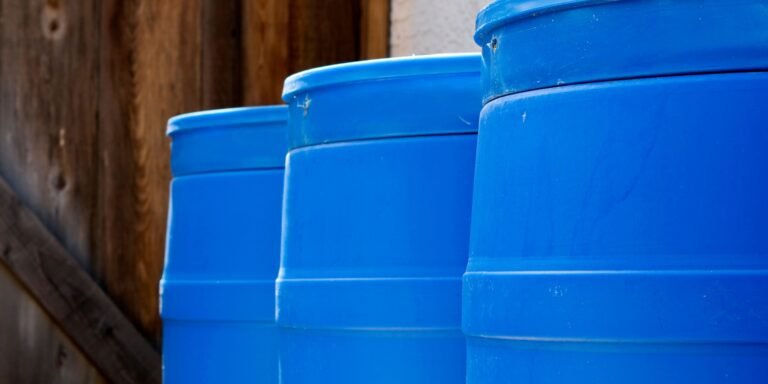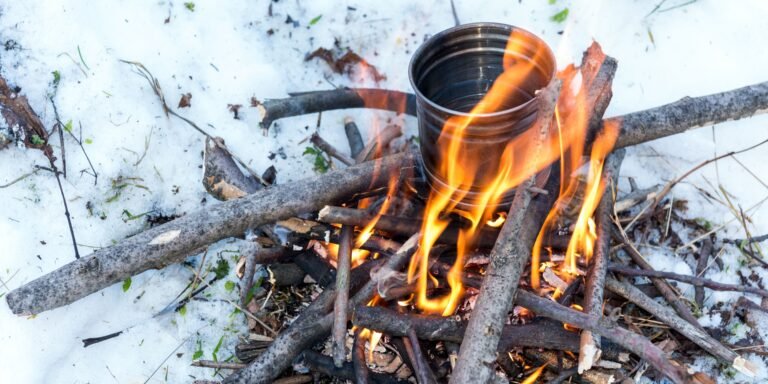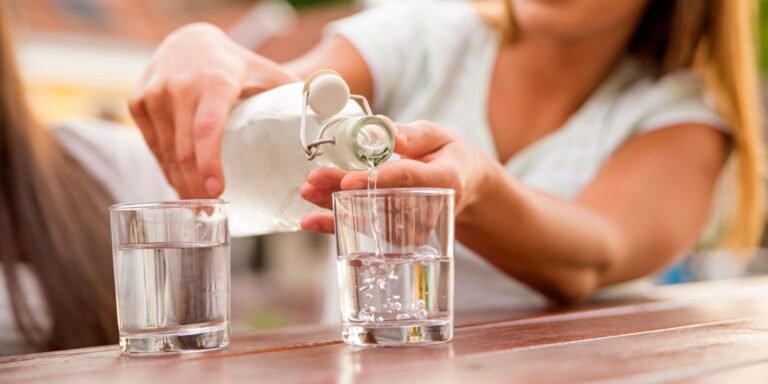5 Methods to Purify Water From Any Source
This post may contain affiliate links, full disclosure here.
Purifying drinking water is undoubtedly the most important skill for travelers, hunters, or anyone in a survival crisis of any kind. It is critical that you have a thorough awareness of the many ways of purifying water.
Water is required for almost all activities, and if you know how to purify the water you find, you’ll be miles ahead of the typical person. Any nearby stream, water reservoir, or lake will become a vital resource for ensuring your life.
See also: Top 20 Barter Items to Stockpile
why You Might Need To Know How To Purify Water
Knowledge of self-sufficiency will be crucial in the event of a catastrophic disaster in which the fundamental utilities that you rely on in your everyday life are unavailable. The most important factors in your survival are food and water. Humans can survive without food for a few weeks, but just a few days without water. If you can find a way to get fresh water, you’ve just given yourself and your family a lot of time to work out the rest.
So why can’t you drink from a stream if you’re thirsty? That’s due to bacteria, viruses, and chemical contaminants, to be sure. Deer droppings upstream from where you receive your drinking water could make you severely ill or perhaps kill you.
Drinking unpurified water can cause diseases like Giardia, Cholera, Typhoid Fever, E. coli, and Dysentery. These are all really dangerous diseases, so always make sure you’re drinking safe water.
Water Sources That Need Purifying
- well water (may need purification and usually needs electricity to run the pump)
- mountain streams
- lakes or reservoirs
- springs
- swimming pools and hot tubs
- old capped wells
- rainwater – Rainwater can be collected in some areas but is illegal in others (like Colorado). But don’t assume that you can drink it as is – remember there are birds and insects living on the roof and their feces end up in the tank. It can, however, be an excellent source of water for watering the garden or flushing toilets.
Ways to Purify Water
There are several methods for purifying water, but it’s an old wives’ tale that beds of sand and gravel work well. The space between sand grains is large enough for microscopic Giardia lamblia parasites to pass through. (Believe me, you don’t want giardia!)
Giardia and Cryptosporidium are two waterborne parasites that are commonly found in swimming pools, hot tubs, and rural settings. They are spread by human and animal feces and are difficult to eradicate.
The brands I’ve listed are some of the best products available, depending on the amount of water you want to filter or purify and the portability.
- Boil Water
- Bleach Water
- Use A Water Filter
- Iodine
- Sunlight
Boiling Water
The concept that you can boil water to make it biologically safe to drink is common knowledge among survivalists. This is arguably the most well-known water purification technology. Boiling the water kills bacteria and any other organisms present. This will not remove any chemical contaminants from the water, but it will ensure that you do not contract Giardia and its accompanying symptoms in the event of a crisis.
It’s also crucial to filter out the large contaminants from the water before boiling it for drinking purposes. This can be accomplished with anything as basic as a damp t-shirt folded over itself a few times. Boil the water after passing it through the t-shirt to ensure no large particulate particles remain.
To purify water by boiling, use a heat source such as a gas stove, campfire, BBQ, or a fireplace and boil the water. Let the water cool before you drink it.
Many individuals are unaware that they do not need to bring the water to a boil. Bringing the water to 160°F for 30 minutes or 185°F for 5 minutes has the same impact as bringing it to a boil, according to the Wilderness Medical Society.
In a survival crisis, knowing this can save your life. You can drink biologically safe water if you have a fuel-efficient means to heat your water to 160°F for 30 minutes. Solar cookers, for example, have been used by preppers to do this. The disadvantage of utilising this method to cleanse water is that, as previously indicated, it does nothing if the water contains chemical pollutants. It’s also a good idea to let the water cool down before drinking it.
Consider completing the next procedure and treating the water with bleach if you want to take further care to ensure your drinking water is safe to consume.
See also: How To Boil Water Without Electricity
Bleach Water
In the following amounts, common household chlorine bleach can be used to disinfect water:
In clear water, 4 drops per quart yield 10 ppm (increase to 8 drops in cloudy water).
16 drops will provide 10 parts per million (ppm) per gallon of clear water.
After about 15 minutes, you should be able to detect a faint chlorine odor. If this is not the case, add more chlorine. Chlorinated bleach deteriorates over time. It has a shelf life of about 6 months in storage at temperatures of 70 degrees or less. It will have lost most of its potency after one year on the shelf, so double the dose. Never use scented bleach or bleach-containing additives.
Having said that, most city water in the United States already contains chlorine (I can’t speak for other countries). Because our tap water contains chlorine, it is not necessary to add chlorine to the water that is being stored.
It is also not necessary to rotate storage water unless you simply prefer to do so. Yes, after a few years, it will smell or taste strange. This is due to a lack of oxygen. It will taste better if you pour it back and forth between two containers to oxygenate it. If you’re not sure if it’s pure, the best way to find out is to boil it. Water, on the other hand, does not rot like food because it is always just water.
WARNING: Chlorine and iodine do not consistently kill Giardia and Cryptosporidium. In colder weather, increase the wait time by doubling or tripling your chances. More dependable are boiling or chlorine dioxide tablets, as well as good water filters.
Although it is not needed, it is ideal to combine the boiling and bleach treatment methods to ensure optimal water purification effectiveness. Make sure to boil the water first, then proceed with the bleach technique.
Water Filter
Small portable water filters were designed with backpackers in mind who spend days in the bush. You can’t bring the appropriate amount of water with you when you’re spending that much time away from the convenience of a running tap, so you’ll have to purify what you find.
Lifestraws have long been a popular solution to this problem, and they’re ideal for both survivalists and preppers. A ceramic filter element is used in this type of filter to filter out bacteria and other undesirable particles. Its filter also incorporates carbon, which removes the majority of chemical pollutants. These are small and easily transportable.
Iodine Tablets
When one tablet is dissolved in a quart of water, it releases 8 ppm (parts per million) of iodine. For cloudy water, two tablets are used. After adding the tablets, wait 15 minutes, or 30 minutes if the water is cold. Iodine tablets are ineffective against Giardia and Cryptosporidium and can harm some people’s health.
When you drink water that has been treated with iodine, you will notice that the iodine flavor is still present. This is completely natural and does not mean the water is hazardous to drink. Despite the fact that some people appear to be more tolerant of the taste of iodine-treated water than others, most survivalists will still incorporate powdered energy drink mixes with their iodine in order to mask the iodine taste.
A few crucial points to remember while using iodine to treat water: Because iodine is light-sensitive, it should be kept in a dark environment and/or in a dark-colored bottle.
WARNING: Pregnant or nursing women, as well as people with thyroid problems, should avoid drinking iodine-treated water.
Disinfecting Water With Sunlight
Pour clean water into PET (PolyEthylene Terephthalate) bottles and place in the sun for at least six hours if the sky is clear or up to 50 percent cloudy. If the sky is 50 to 100 percent cloudy, the container must be exposed to the sun for two days in a row. PET plastic bottles or clear glass bottles are preferred. Solar radiation and heat are used in this method to kill pathogenic microorganisms that cause waterborne diseases.
Avoid the use of PVC bottles (PolyVinyl chloride). UV stabilizers are used in PVC bottles to block the sun’s radiation. (PVC bottles frequently have a slightly bluish tint.)
The World Health Organization has confirmed that the SODIS process works, after testing in multiple third world countries.
Because all you need is a clear plastic container and sunshine to disinfect water, this is an excellent technique to learn. Because any creatures in the water must be exposed to sunlight in order to be killed, it is vital to note that the larger the plastic container is, the more difficult it will be to kill any organisms inside. This is because the more water sunlight must pass through to destroy creatures near the bottom, the less effective it is.
It’s also critical to get the water as clear as possible. If the water is murky or includes a lot of particulates, strain it first through fabric or some other sort of improvised filter to clear it up. Use small water bottles, as clear water as possible, and let the temperature of the water to rise as high as possible during the procedure if you want this method to be as effective as possible. Many individuals may place the water bottle in the sun on a black metal surface to help raise the temperature of the water.
Where To Find Sources Of Water
Water can be found in a variety of locations both inside and outside your home. Check what water is left in your water pipes, water heater, toilets, and fish tanks for water sources inside your home. Check for neighboring lakes, ponds, rivers, or any other body of water for sources outside of your home.
Of course, most of these sources will need to be purified in some way before they can be consumed. The most prevalent potential sources of water found outside the home, as well as the quality of the water found in each source, are discussed below.
Puddle
The least desirable source is standing water, which serves as a breeding ground for creatures and insects. Chemicals that have leached from vehicles almost always contaminate puddles on the street. Once the puddle has dried up, it is unlikely to reappear until the following rainstorm.
Slow Moving River Through Town
The water is moving, which is preferable to stagnant water. Because this river is surrounded by urban development, there is a great risk of contamination. The water appears murky, indicating a high concentration of particles. It appears to be freely accessible to the general population, potentially increasing the risk of contamination.
Pond or Lake
Because the water remains stagnant and not flowing, organisms and insects may be aided. Because this body of water looks to be exposed to the public, there is a higher chance of pollution. This source appears to have enough capacity to supply a big amount of water. Water bodies at higher elevations are often cleaner because they are less likely to absorb runoff from farms or industrial locations.
Fast River
The water is running at a very rapid rate, which helps to keep the water fresh. There is snow on the banks, indicating that the water is most likely winter runoff. Contaminants from upstream are kept to a minimum at a high altitude. It appears to be quite far away, implying that human-caused pollutants are unlikely.
Harmful Microorganisms Found In Water
| Type | Examples | Spore Size | Type of Filter Needed |
|---|---|---|---|
| Protozoa | Giardia, Cryptosporidium | 5 microns or larger | Water filter |
| Bacteria | Cholera, E. coli, Salmonella | 0.2 – 0.5 microns | Microfilter |
| Viruses | Hepatitis A, rotavirus, Norwalk virus | 0.004 microns | Water purifier |







